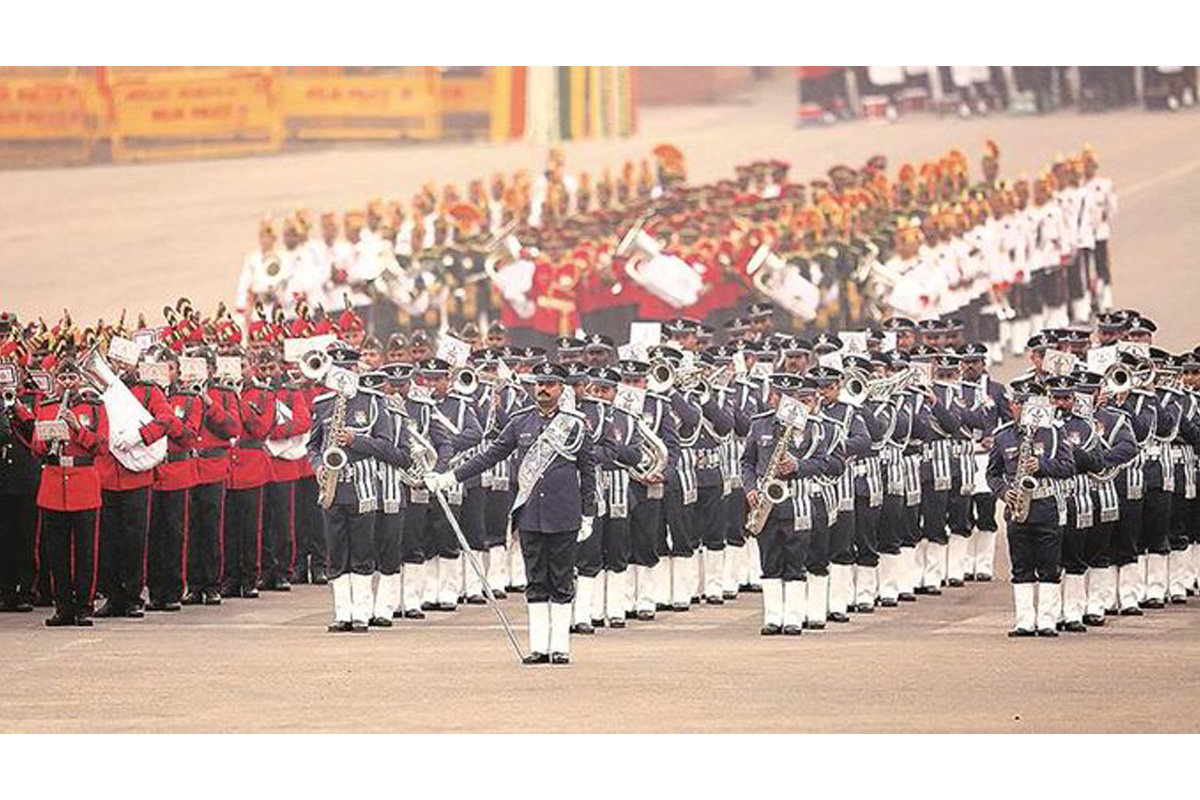Amir of Qatar receives Guard of Honour, ceremonial welcome at Rashtrapati Bhavan
Amir of Qatar, Tamim Bin Hamad Al Thani received the Guard of Honour and a ceremonial welcome in the forecourt of the Rashtrapati Bhavan on Tuesday.
The Republic Day parade itself is an archaic display of military might and grandeur, an anachronism in a modern day democracy, but successive governments have revelled in showcasing it to foreign guests and comparing it to the Bastille Day celebrations in Paris’ Champs Elysee.

(Image: Twitter/@lifestyle_ie)
The Christian hymn, Abide With Me, is learnt to have been dropped from the list of tunes to be played at the Beating Retreat ceremony held every year on January 29 at Vijay Chowk with the magnificent Rashtrapati Bhavan, North and South Blocks forming the backdrop. The haunting melody, a favourite of Mahatma Gandhi, is likely to be replaced by Vande Mataram. Defence ministry sources have said this is part of a move to Indianise the Beating Retreat ceremony, one that dates back to 16th century England.
In the past few years, several Indian songs have been introduced in the event, replacing the largely Western tunes of the past. Abide With Me, which has been performed at the Beating Retreat since 1950, usually marks the end of the ceremony after which the bands play Sare Jahaan se Achcha. This year, the ceremony may end with Vande Mataram, according to reports. Change is inevitable and sometimes welcome but the dropping of a Christian hymn and Allama Iqbal’s iconic freedom anthem (though he later migrated to Pakistan) causes disquiet.
Advertisement
Beating Retreat is a centuries-old tradition marking the end of the day’s fighting during battle and soldiers returning to their camps in the evening. Bands from the three defence services and Central armed police forces perform at Vijay Chowk to signal the end of the annual Republic Day celebrations. India’s colonial past cannot be selectively wished away since it has shaped the country in so many ways.
Advertisement
The Republic Day parade itself is an archaic display of military might and grandeur, an anachronism in a modern day democracy, but successive governments have revelled in showcasing it to foreign guests and comparing it to the Bastille Day celebrations in Paris’ Champs Elysee. Lutyens Delhi, the bete noire of the present government, is also a manifestation of this colonial heritage.
The 340- room Rashtrapati Bhavan, which housed the Viceroy of British India, luxurious bungalows where the Prime Minister and his ministers live are all symbols of that reviled legacy. Now the government has embarked on its ambitious Central Vista revamp project to be completed by 2022 coinciding with the 75th anniversary of India’s Independence. It envisages a triangular Parliament building next to the existing Parliament House, a common Central Secretariat and a rejig of the 3-km Rajpath from Rashtrapati Bhavan to India Gate.
The houses of the Vice-President and Prime Minister will also be shifted closer to the North and South Blocks. The project has raised concerns among architectural experts and environmentalists because of the sweeping changes planned in a heritage zone and the likely denuding of green cover.
The revamp, which by some estimates will cost a whopping Rs 12,000 crore, seems nothing more than a vanity project of the dispensation to leave its mark on India’s history. The money would be better spent on housing and amenities for the poor and marginalised. For everything that is old isn’t necessarily bad.
Advertisement